15 Interesting Anteater Fun Facts You Never Knew
Get your nose stuck into these fifteen fabulous furry facts!
Anteaters are adorable, feisty and just plain strange! Whether they're scrabbling inside anthills for a tasty snack, or fighting off big cats with their fearsome claws, they've always got a lot going on! We've compiled fifteen fascinating essential facts about these long-nosed creatures for your entertainment - how many do you already know? Get your claws in!
Want more animal facts? We've got you covered! Learn all about kooky quokkas, sensational snow leopards, and fascinating ferrets!
1. There are four kinds of anteater
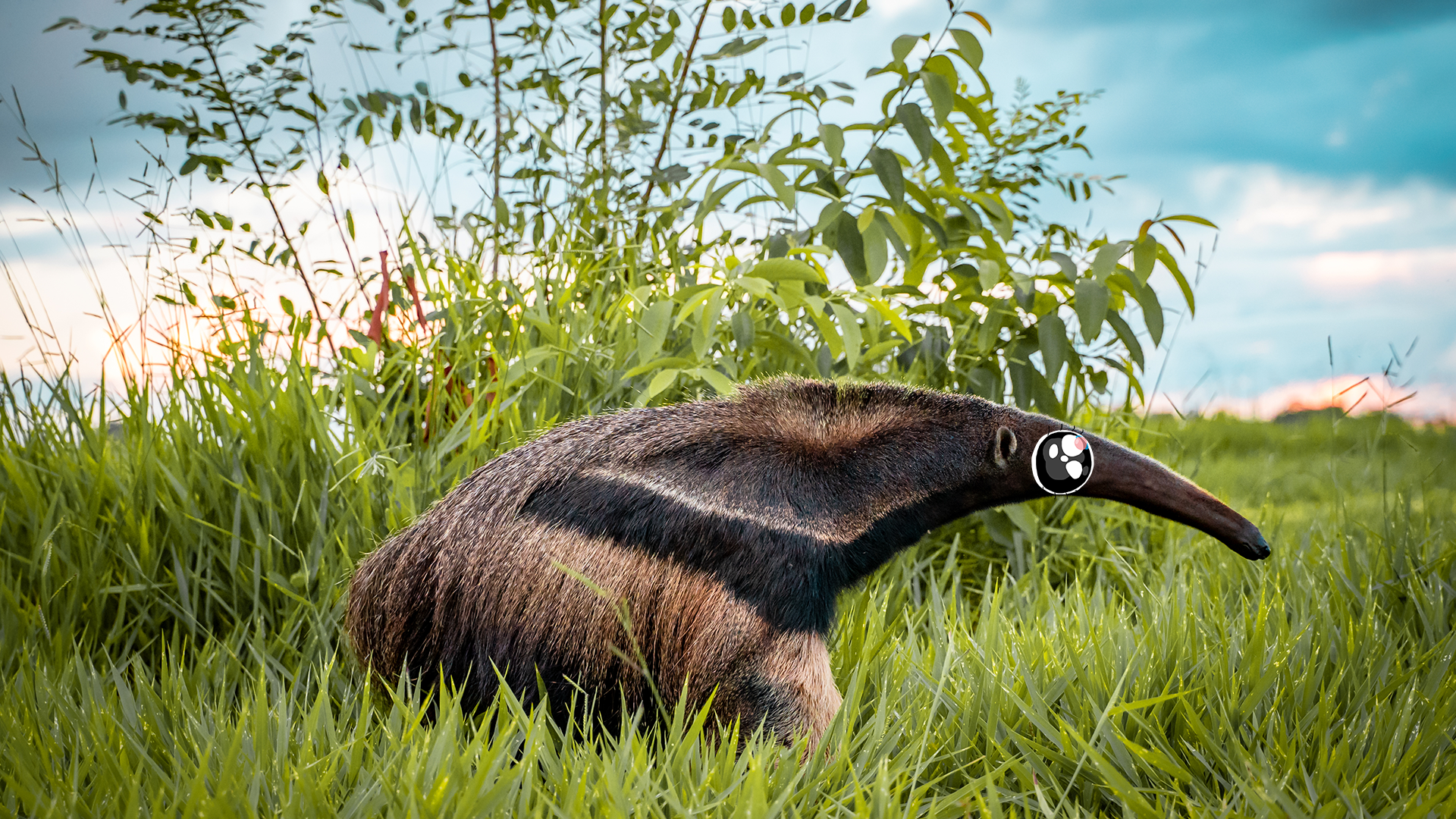
There are four different kinds of this long-nosed beast: the giant anteater, the silky anteater, the southern tamandua (also called the collared anteater) and the northern tamandua! They're a bit different from each other, but all have long snouts with thin tongues and big, curved claws perfect for tearing open ant and termite mounds!
2. Other animals are sometimes called anteaters, too!
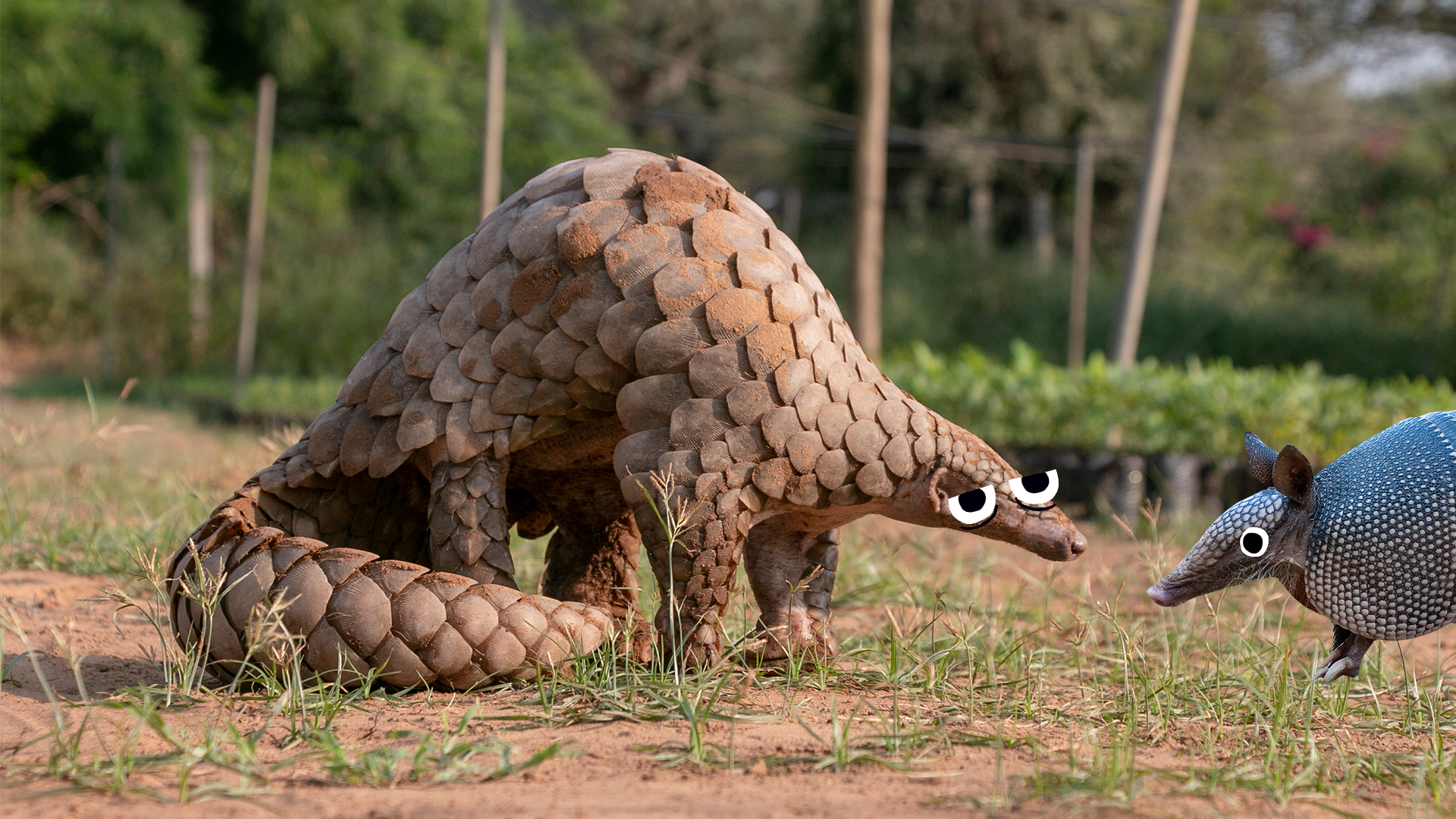
Even though the four above species are the only "true" anteaters, sometimes other animals get called anteaters too! These include aardvarks, echidnas and pangolins, which aren't very closely related to anteaters, but also have long noses and (surprise) love to eat ants!
3. The Latin name is very appropriate
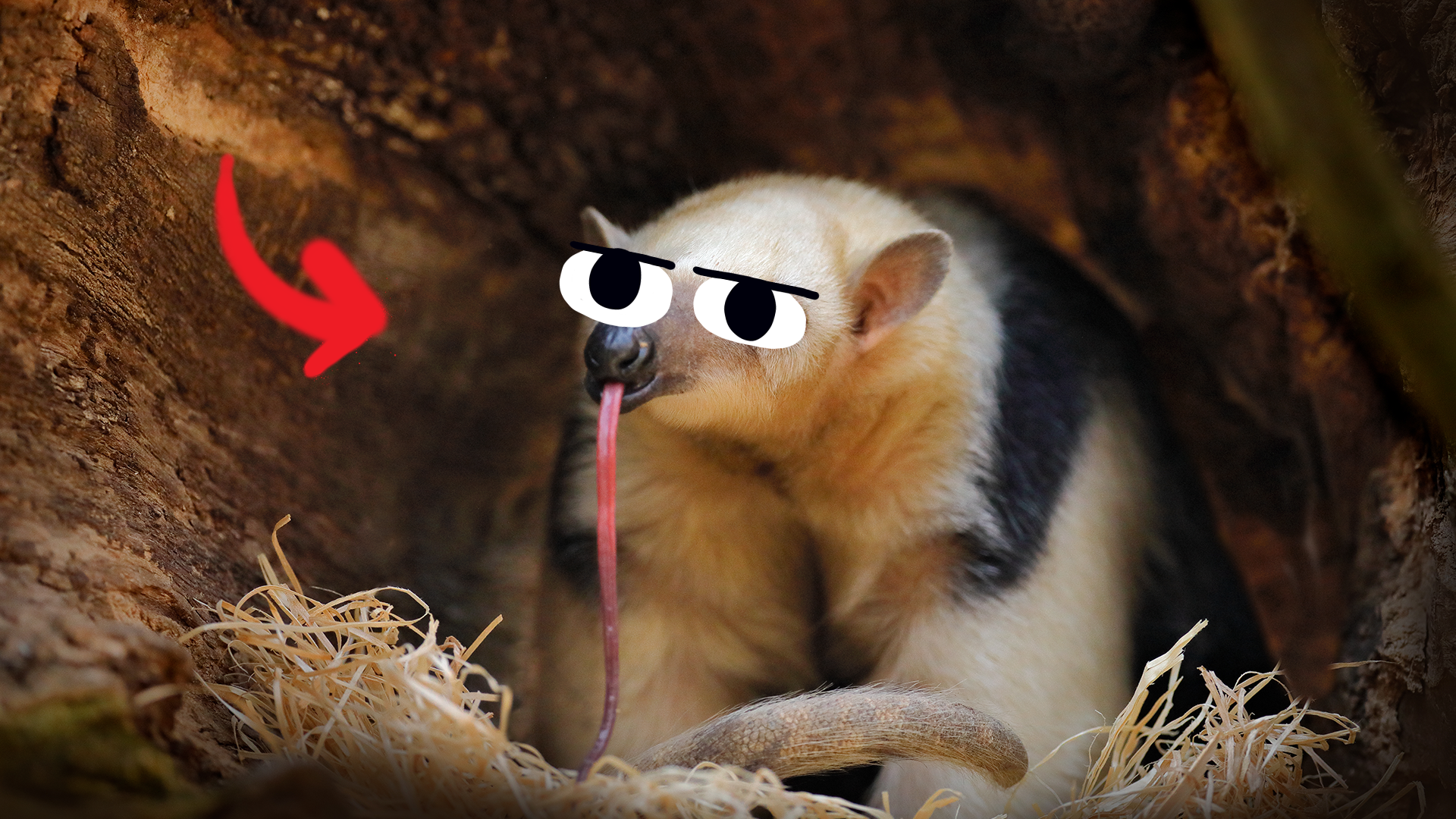
The four types of anteater are from the suborder Vermilingua, which translates to "worm tongue"! Anteaters have crazy long tongues (up to 2 feet long for giant anteaters) that are also very thin, perfect for slurping up insects!
4. Their tongues are more complicated than you think

Those tongues aren't only long, they're also perfectly designed for what they need to do! The tongue is covered in tiny hooks called filiform papillae, which hold insects on the tongue along with huge amounts of spit - gross! The tongue can flick in and out about 150 times per minute, and it's also attached to the anteater's sternum - for you, that's the flat bone at the front of your chest. Imagine if your tongue started there!
5. Those claws are deadly!

Fun fact: when anteaters walk with their front paws curled into fists to protect their claws and keep them sharp! This is important because those claws serve two very important purposes. The first is to break open ant and termite nests and mounds to get at the delicious insects inside! The second reason, though, is because...
6. They have predators
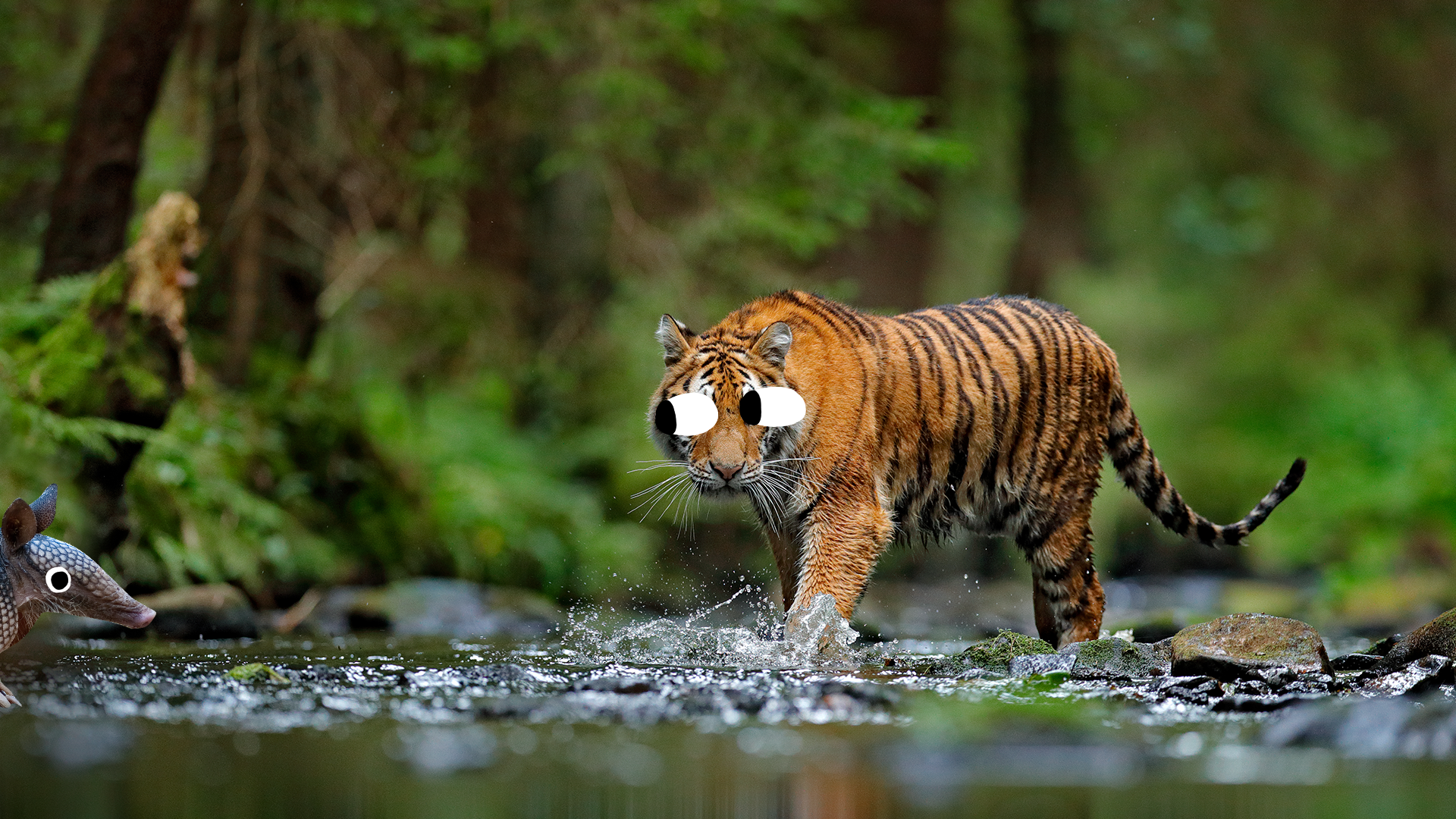
That's right, anteaters can also be a tasty meal for big cats! You could probably call them "anteater-eaters". Those claws are the anteaters' best line of defense. They will stand on their back legs and swipe and slash at their attackers.
7. They are LARGE
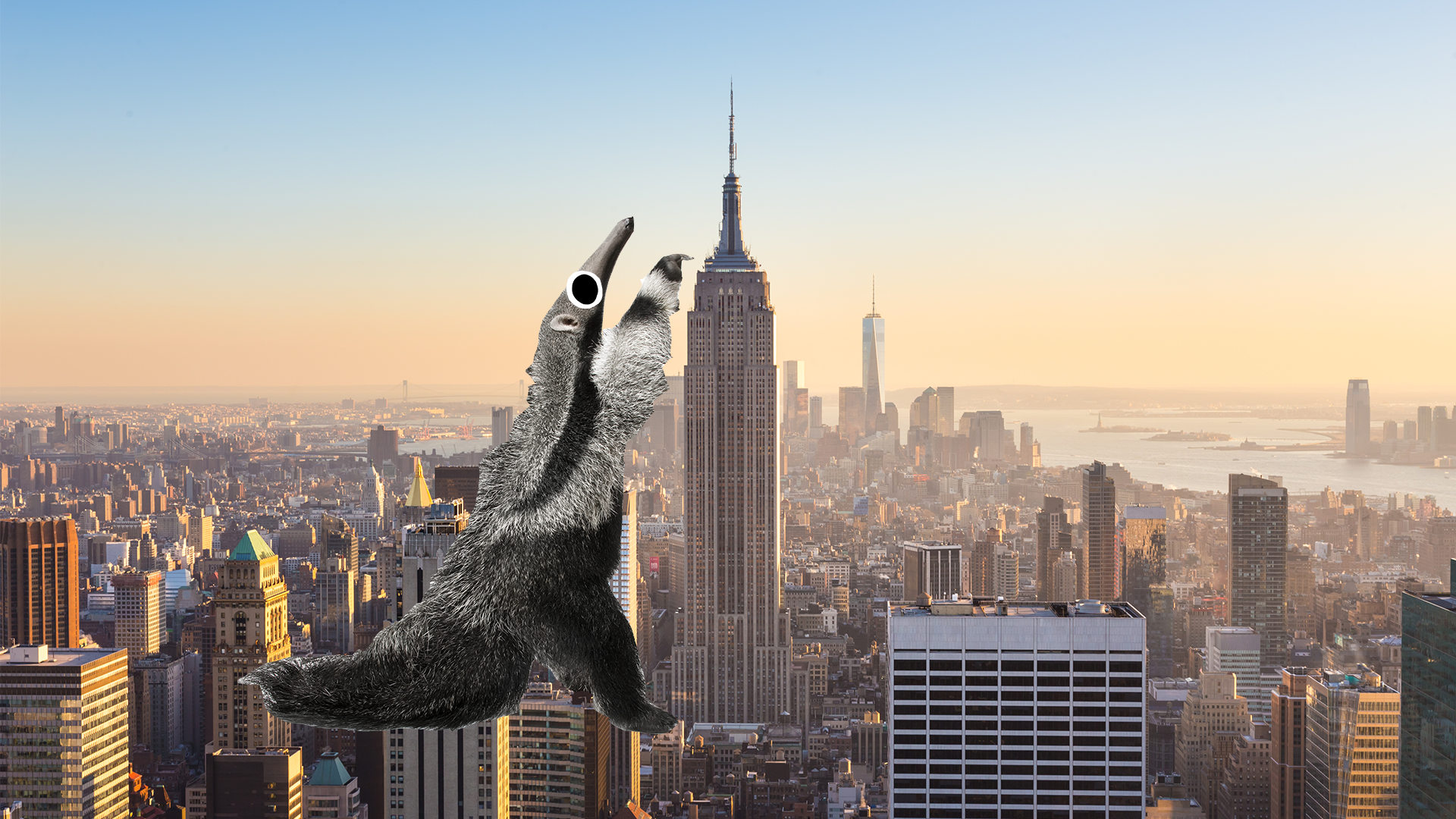
Giant anteaters (probably the most recognisable kind of anteater) grow up to 2 metres in length, and weigh up to 55kg. When an anteater stands on its hind legs, it will be taller than most grown men!
8. They eat other insects, too
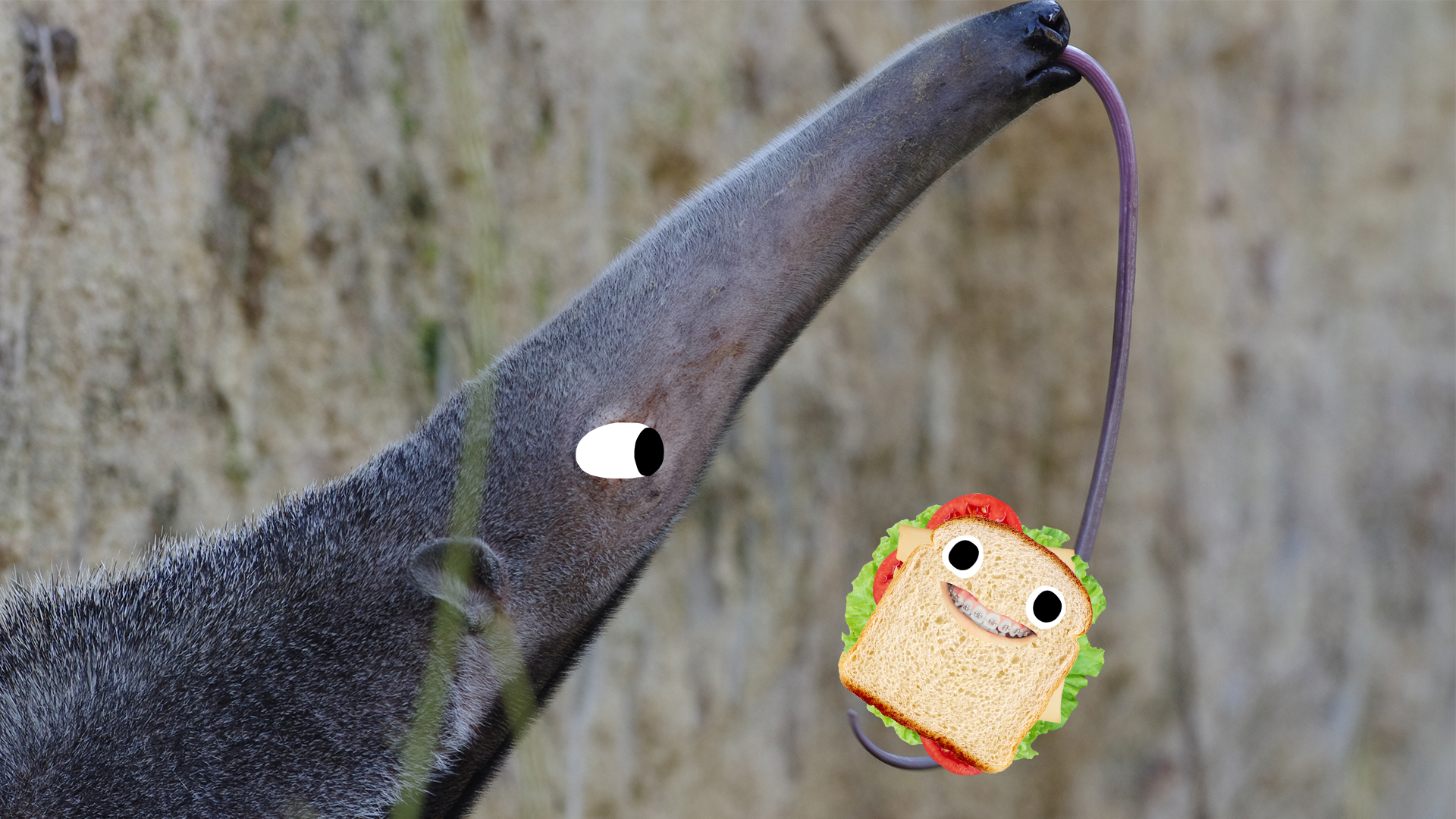
Despite the name, anteaters aren't too fussy about what they eat! They love to eat ants and termites (up to 30,000 a day), but they will also snack on worms and other insects including bees, as well as fruit and bird eggs!
9. They don't have teeth

The scientific word for an animal with no teeth is "edentate". Sloths and armadillos are also edentates! The shape of the anteater's long snouts also acts like a vacuum, slurping their food down for them. Their stomachs also have hard ridges on the inside, which help to grind up the insects once they've been eaten. Anteaters will also swallow sand and dirt to make this even easier (birds do something similar).
10. They have the lowest body temperature of any mammal
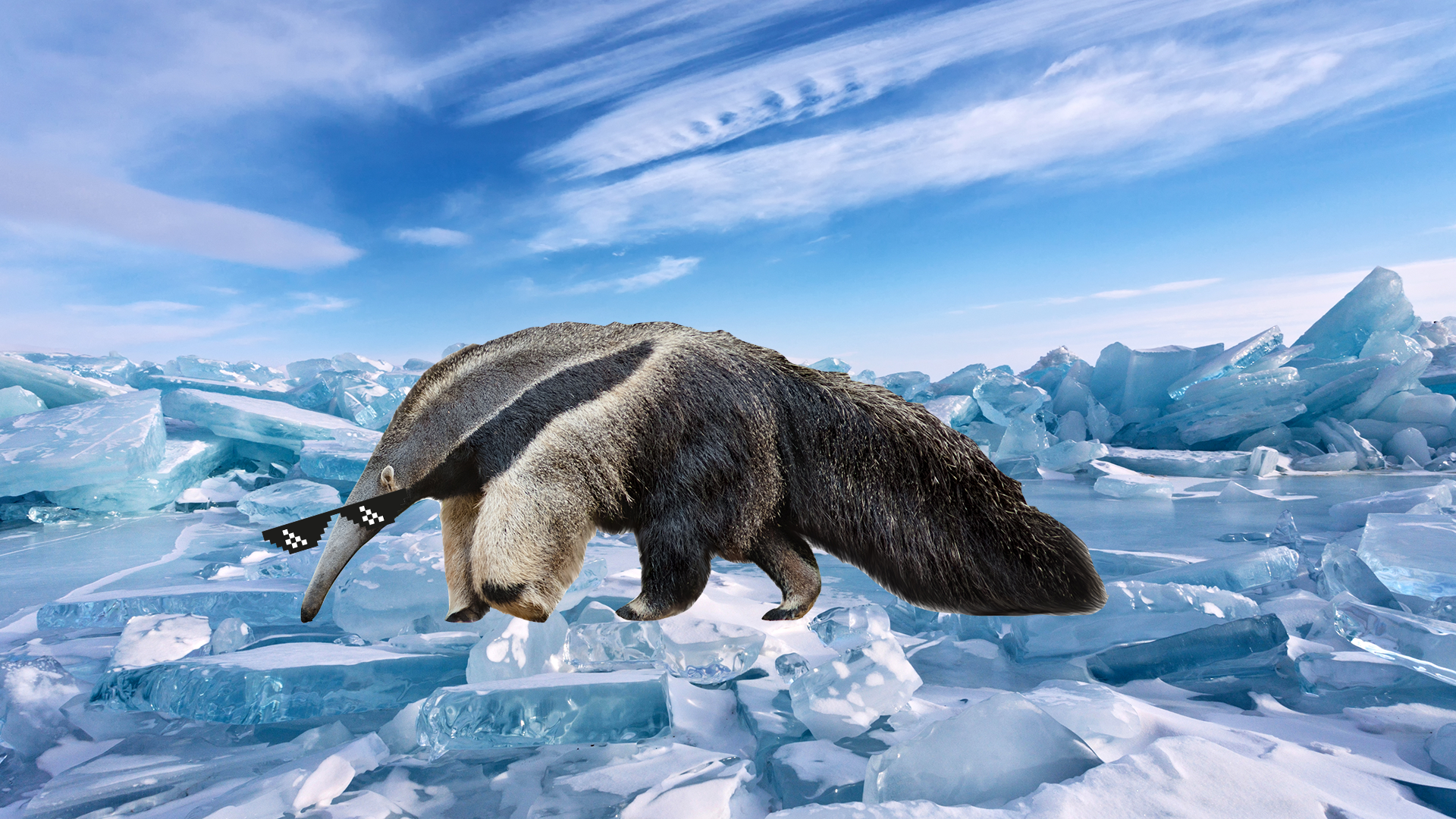
An anteater's body temperature is between 33 and 36 degrees Celcius. For comparison, a healthy human body temp is 37 degrees Celcius. This is probably because the food they eat doesn't really provide a lot of energy or nutrition. They've adapted by sleeping a lot, moving very little, and using their fur to conserve energy.
11. They can be quick if they want to
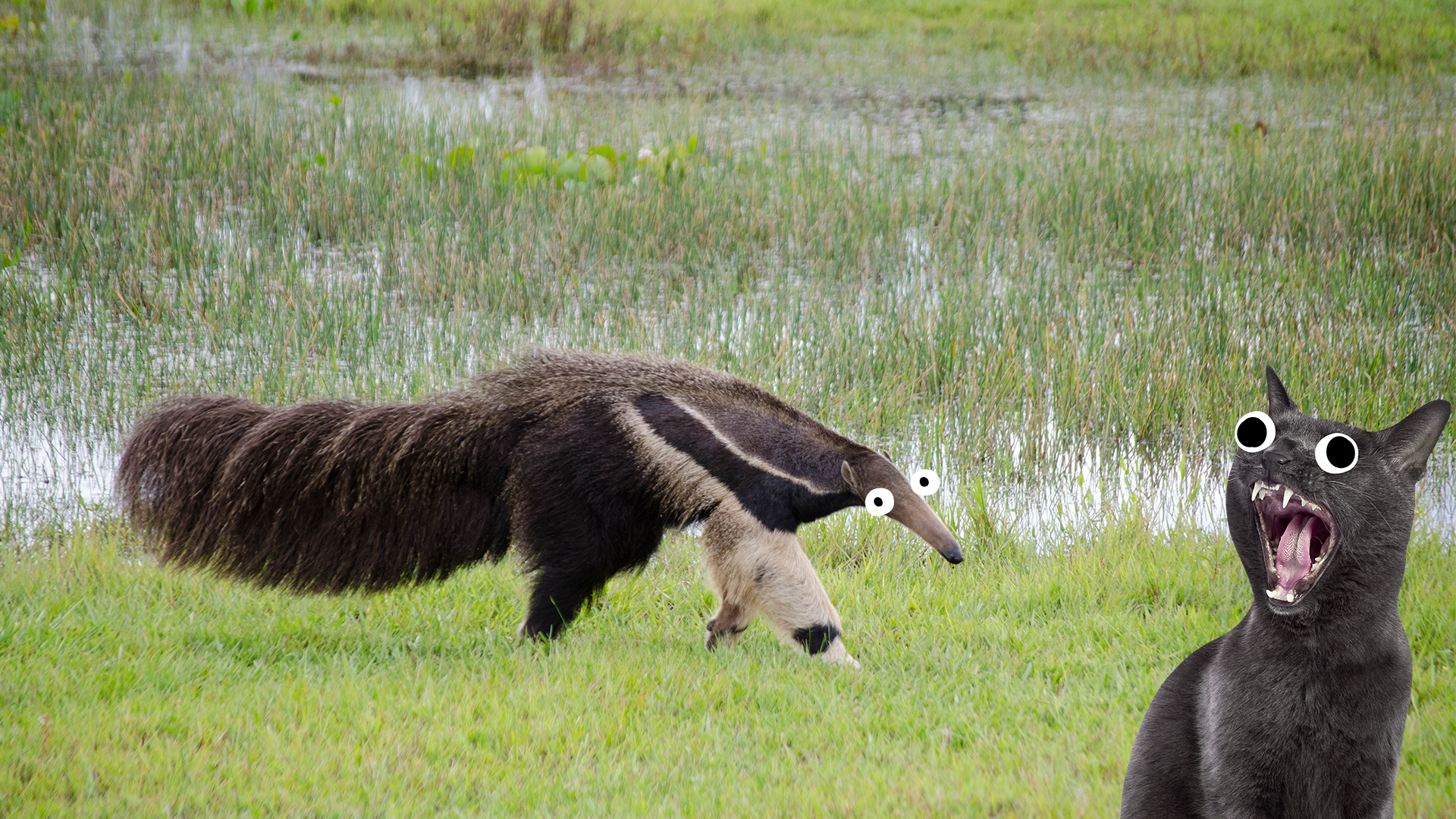
Even though they prefer not to move very much, you couldn't outrun a startled anteater! They've been observed running for short distances at up to 30mph - for comparison, Usain Bolt's top speed is 27.3mph!
12. They give birth standing up
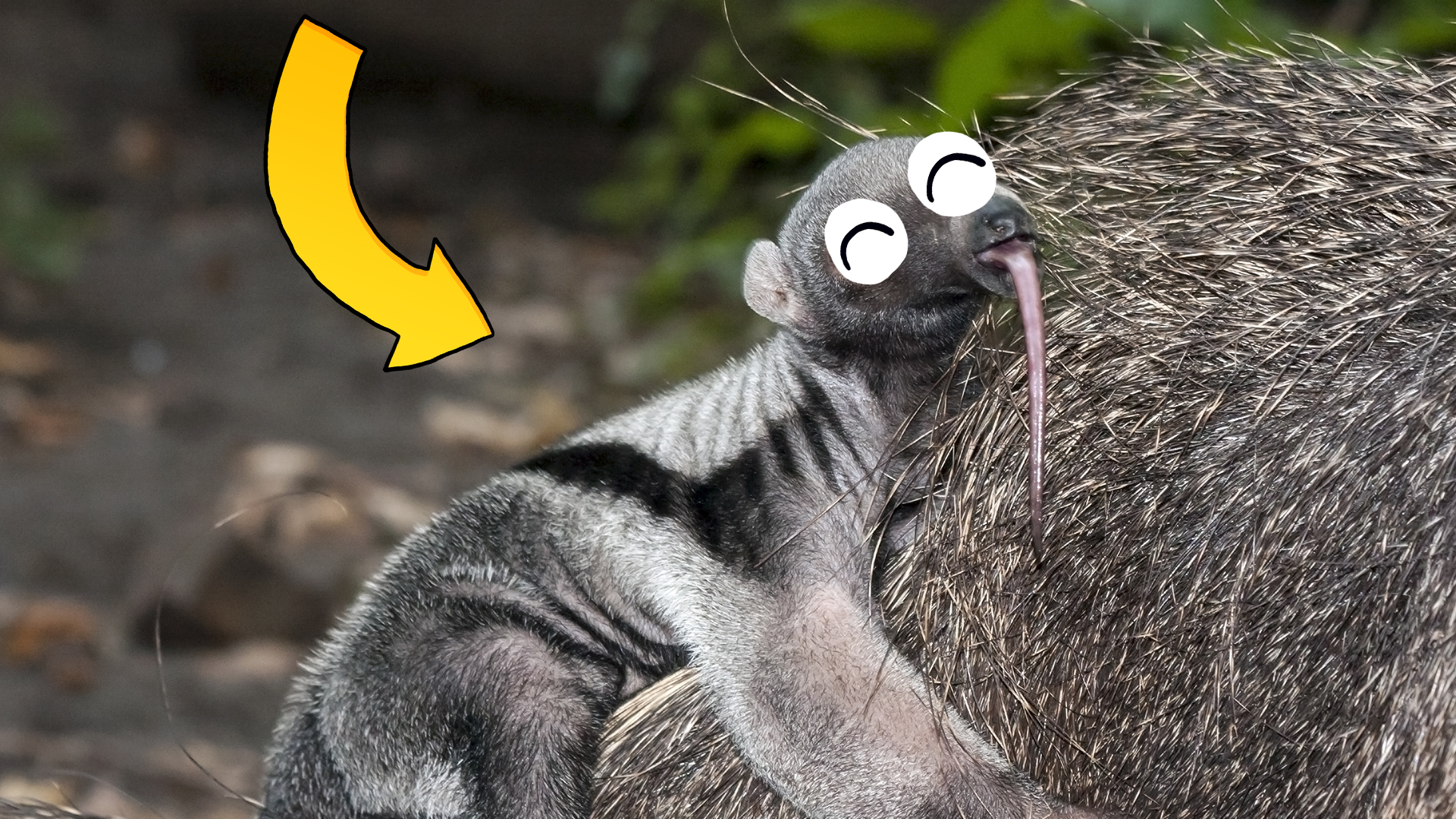
Female anteaters have their babies standing up, using their long tails as support! They only have one baby at a time, and the babies are called pups. Twins can occur, but they're very rare. Until the pups can walk on their own they will be carried on their mum's back.
13. They're mythological
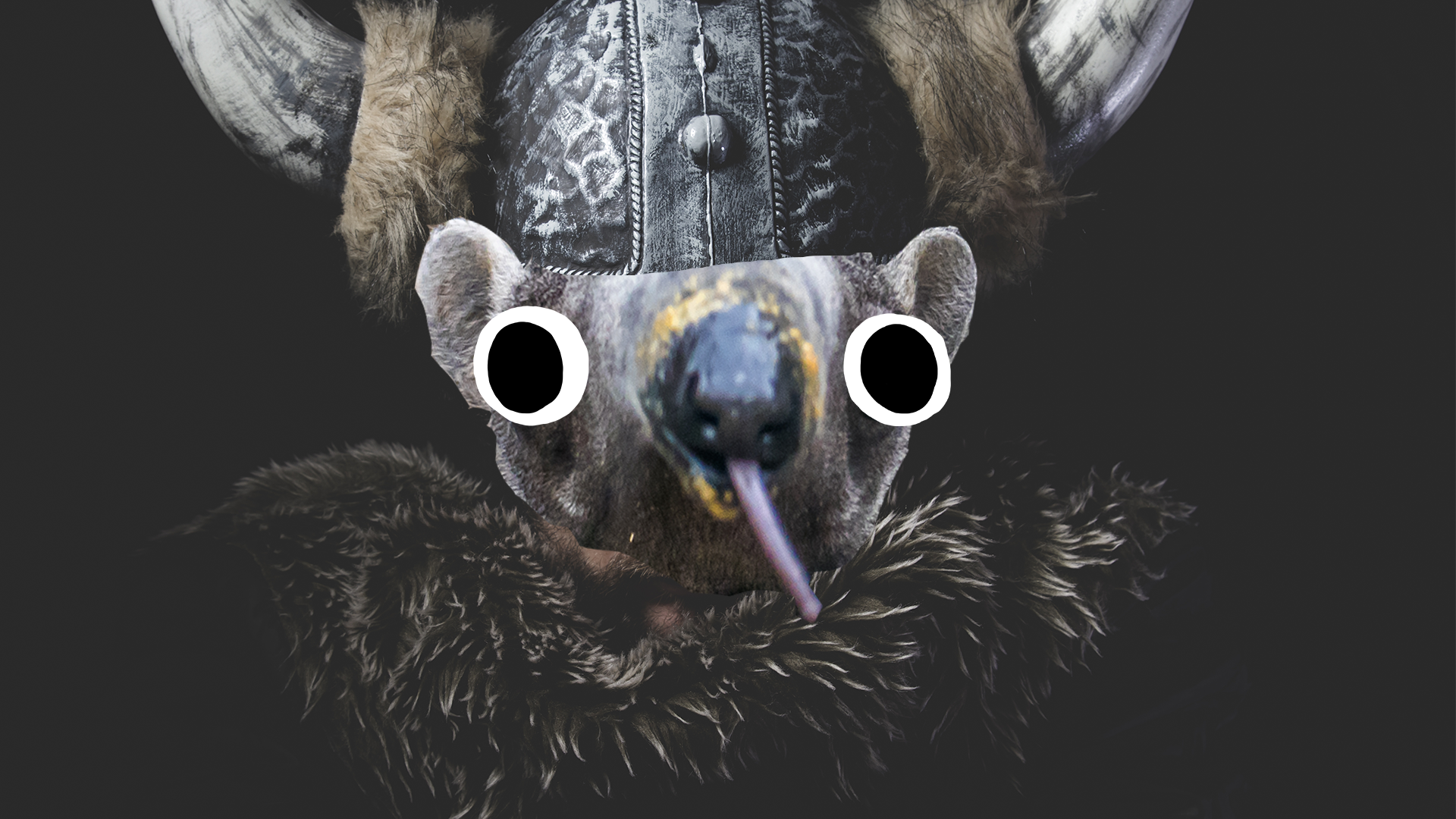
Giant anteaters show up in a lot of mythology and folklore. In the myths of the indigenous people of the Amazon Basin the anteater is often a trickster figure (think Loki, but with a really long nose). In one story of the Shipid people, an anteater challenges a jaguar to a contest to see who can hold their breath underwater. They both remove their pelts and go under - then the anteater jumps out, steals the jaguar's pelt and runs away. What's the moral? Don't trust an anteater, we suppose!
14. They're a little different from each other
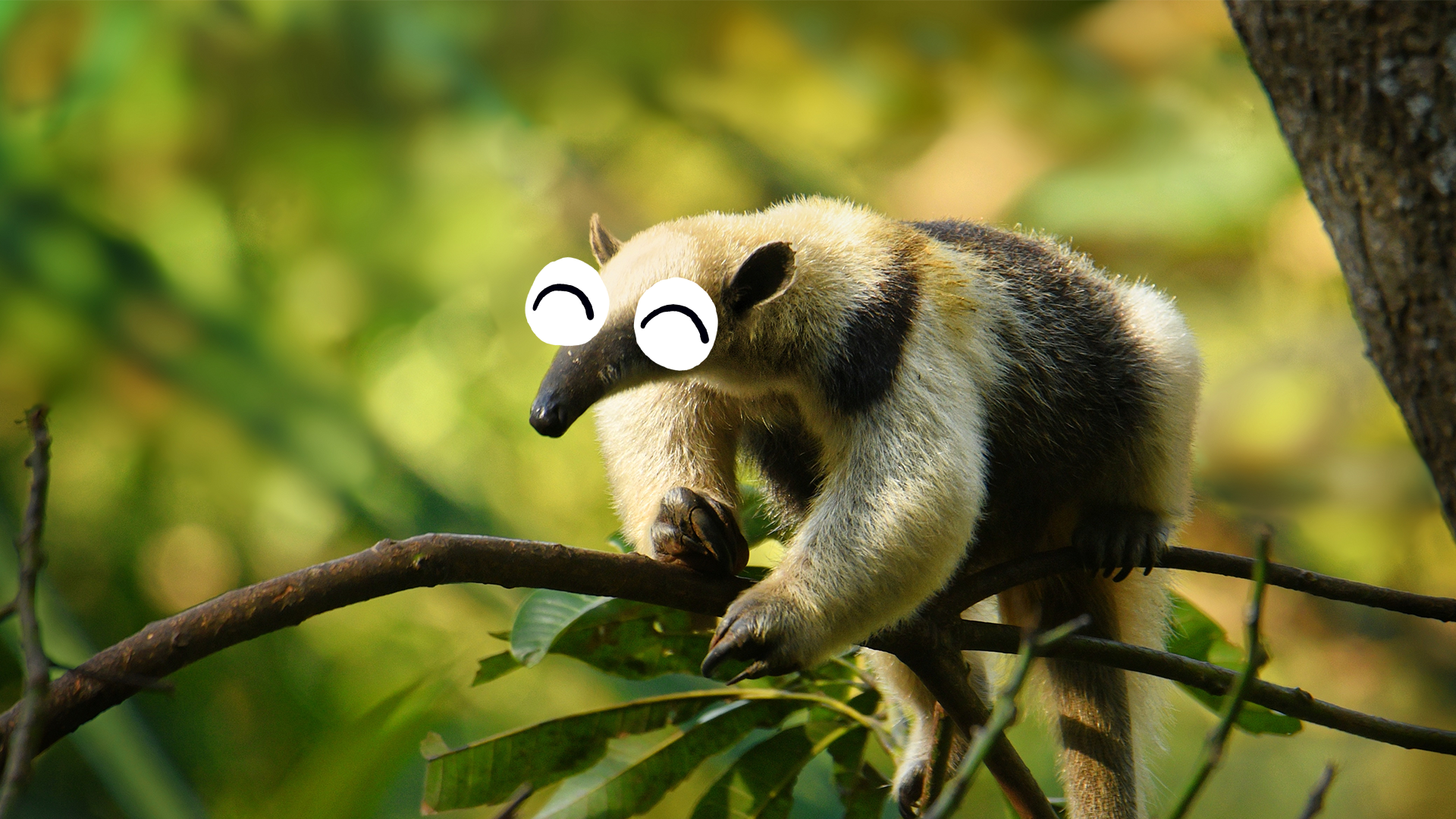
Remember we said there are four kinds of anteater? Well, though they're all quite similar they have little differences too! The giant anteater is of course the biggest, while the silky anteater is the smallest. The collared anteater is named for its stripy pattern that kind of looks like a vest. Their habitats are also a little different. Giant anteaters live in savannahs (grassy woodlands) and spend most of their time on the ground, while silky anteaters and northern and southern tamanduas like to live in trees.
15. They are threatened in the wild
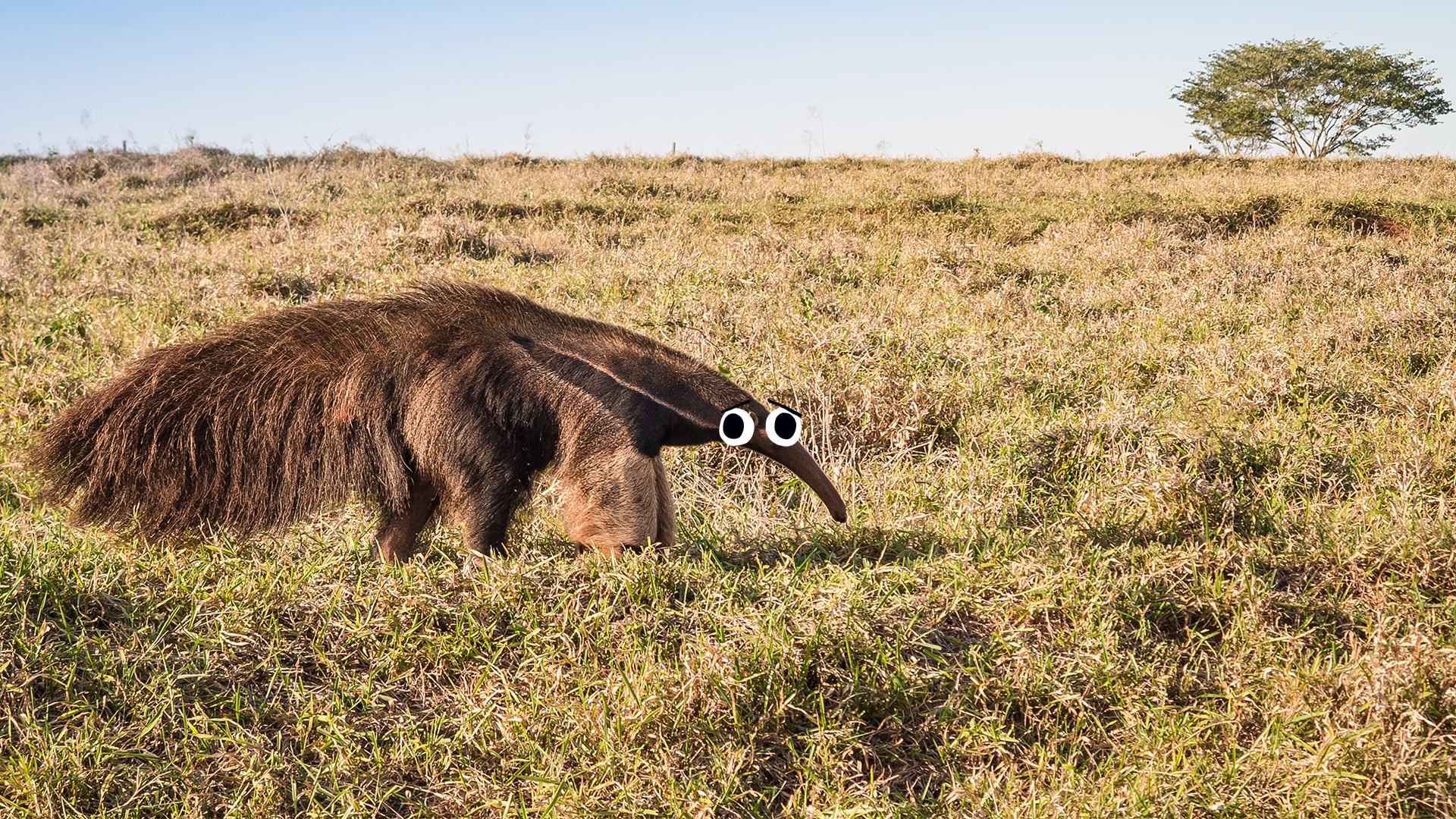
Like a lot of cool animals, the giant anteater is unfortunately in danger. They're classed as Vulnerable, which means an animal's population has declined 50% over a ten year period. One reason for this is habitat loss, but they are also frequently killed by cars or by hunters and poachers. It's good to stay climate aware, and















